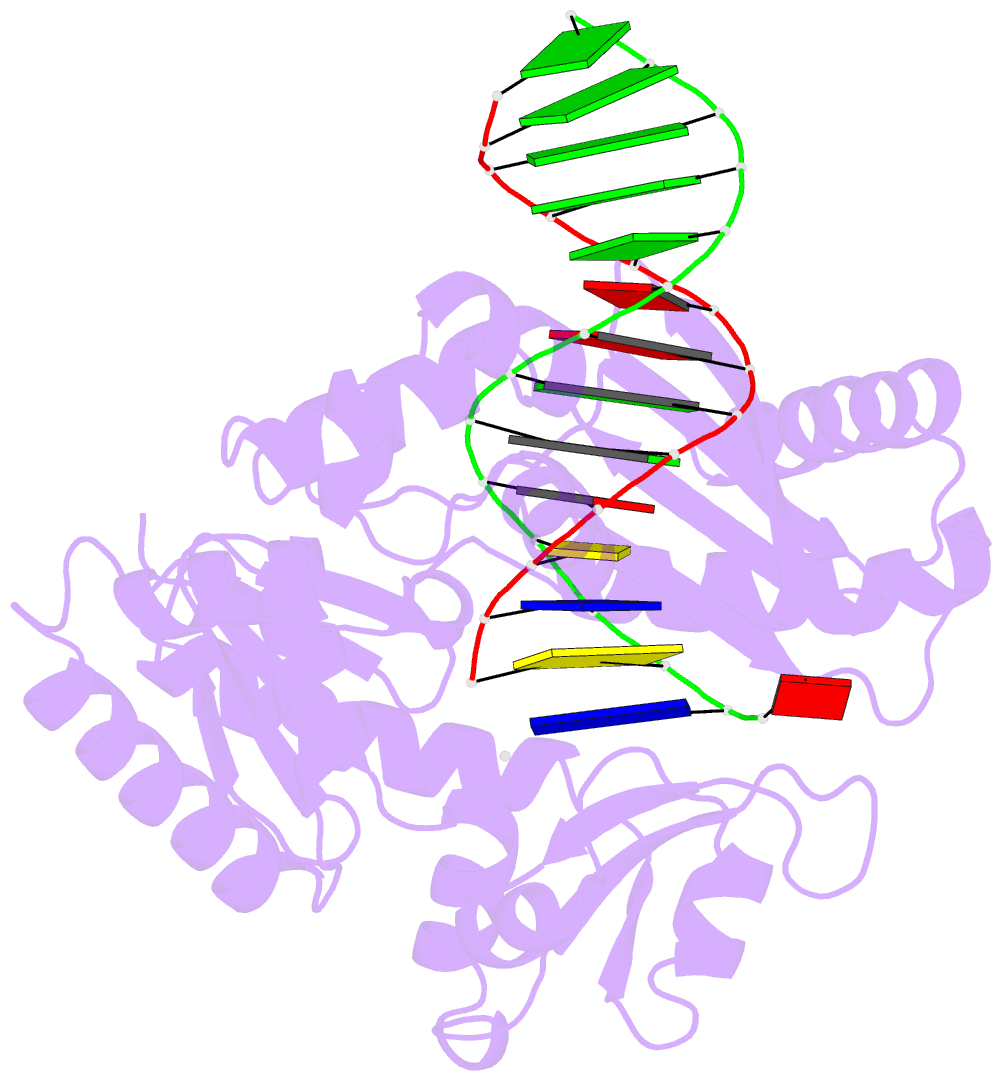Summary information and primary citation
- PDB-id
- 3pr5; SNAP-derived features in text and JSON formats;
DNAproDB
- Class
- transferase-DNA
- Method
- X-ray (2.4 Å)
- Summary
- Dpo4 y12a mutant incorporating adp opposite template dt
- Reference
- Kirouac KN, Suo Z, Ling H (2011): "Structural mechanism of ribonucleotide discrimination by a Y-family DNA polymerase." J.Mol.Biol., 407, 382-390. doi: 10.1016/j.jmb.2011.01.037.
- Abstract
- The ability of DNA polymerases to differentiate between ribonucleotides and deoxribonucleotides is fundamental to the accurate replication and maintenance of an organism's genome. The active sites of Y-family DNA polymerases are highly solvent accessible, yet these enzymes still maintain a high selectivity towards deoxyribonucleotides. Here, we biochemically demonstrate that a single active-site mutation (Y12A) in Dpo4, a model Y-family DNA polymerase, causes both a dramatic loss of ribonucleotide discrimination and a decrease in nucleotide incorporation efficiency. We also determined two ternary crystal structures of the Dpo4 Y12A mutant incorporating either dATP or ATP nucleotides opposite a template dT base. Interestingly, both dATP and ATP were hydrolyzed to dADP and ADP, respectively. In addition, the dADP and ADP molecules adopt a similar conformation and position at the polymerase active site to a ddADP molecule in the ternary crystal structure of wild-type Dpo4. The Y12A mutant loses stacking interactions with the deoxyribose of dNTP, which destabilizes the binding of incoming nucleotides. The mutation also opens a space to accommodate the 2'-OH group of the ribose of NTP in the polymerase active site. The structural change leads to the reduction in deoxynucleotide incorporation efficiency and allows ribonucleotide incorporation.





